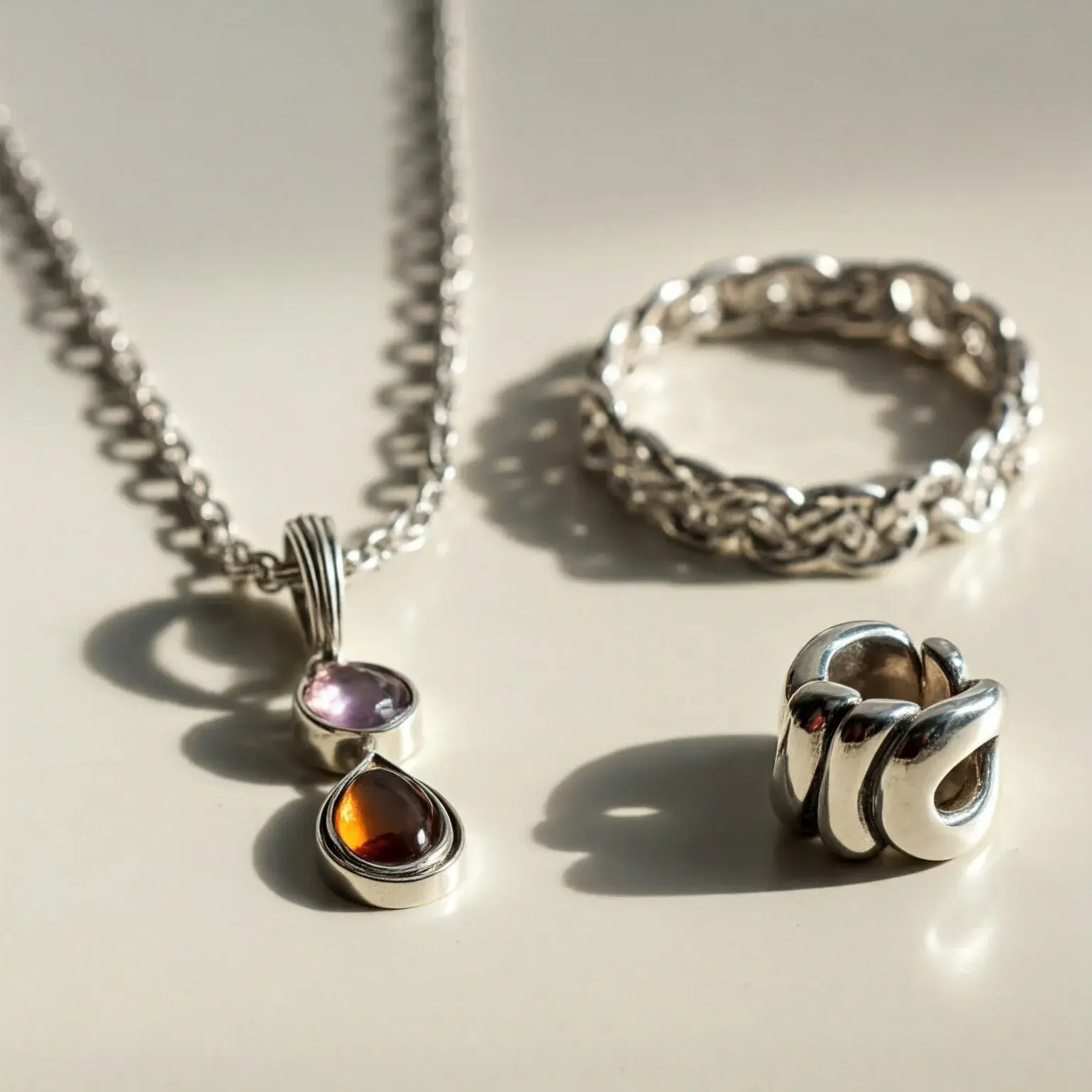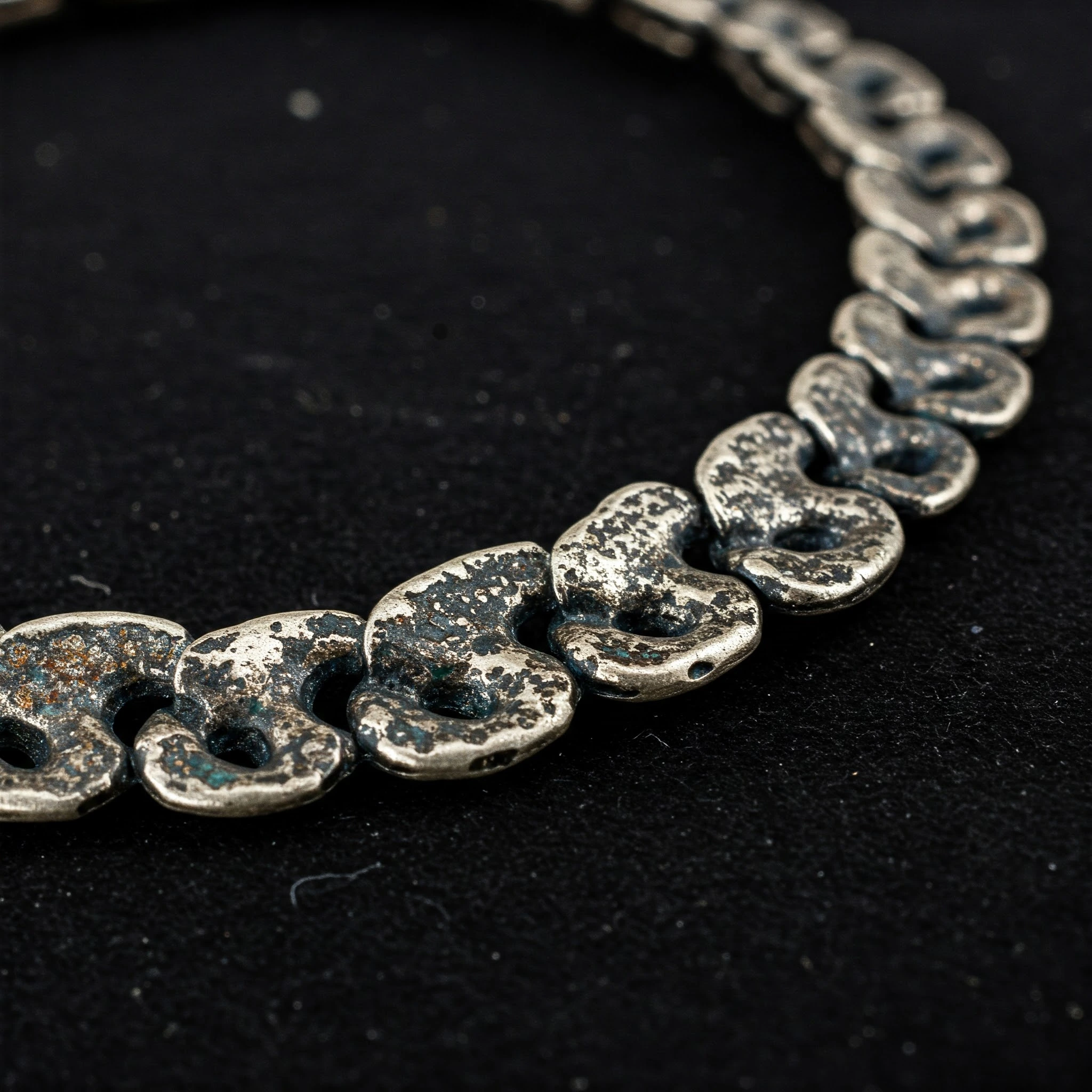How to Spot Fake Silver Jewelry: A Complete Guide to Identifying Authentic Silver

Silver jewelry has long been admired for its beauty, versatility, and value. Whether it’s a pair of sparkling earrings, a delicate necklace, or a bold ring, silver jewelry is a popular choice for many. However, with counterfeit products flooding the market, it’s crucial to know how to distinguish real silver from fake silver to ensure you’re getting what you paid for.
In this comprehensive guide, we’ll walk you through easy steps to identify real silver from fake silver, focusing on practical tests, expert advice, and key characteristics of genuine silver jewelry. By the end of this post, you’ll have all the tools you need to become an expert in spotting authentic silver.
Key Takeaways
- Understand Silver Types: Learn about the different grades of silver used in jewelry, including sterling silver, fine silver, and more.
- Hallmarks Matter: Learn how to check for hallmarks, stamps, and authenticity indicators on your jewelry.
- Test at Home: Simple tests like the magnet test, acid test, and more can help you identify fake silver.
- Watch for Red Flags: Look out for signs such as uneven tarnishing, odd weight, or poor craftsmanship that could suggest imitation silver.
- Shop Smart: Always buy from reputable sources or trusted jewelers to minimize the risk of purchasing fake silver.
Understanding Real Silver Jewelry: What Makes it Authentic?
Before diving into how to spot fake silver, it’s important to understand the basics of real silver jewelry. Silver is a soft, malleable metal, often alloyed with other metals like copper to enhance strength. The purity of silver is measured in parts per 1,000, with higher numbers indicating purer silver.
Types of Silver Alloys Used in Jewelry
Sterling Silver
Sterling silver is the most common type of silver used in jewelry. It consists of 92.5% pure silver, with the remaining 7.5% typically made up of copper. This blend gives sterling silver strength and durability, making it ideal for everyday wear. Sterling silver jewelry is often stamped with “925” to indicate its silver content.
Fine Silver
Fine silver is 99.9% pure silver, meaning it has minimal impurities. While it’s softer and more prone to scratching compared to sterling silver, fine silver is often used in high-end jewelry and decorative pieces.
Argentium Silver
Argentium silver is a newer type of sterling silver alloy that contains germanium, making it more resistant to tarnishing. This option is great for those looking for low-maintenance, long-lasting jewelry.
Coin Silver
Coin silver isn’t a specific standard of purity but generally refers to silver alloys made from melted coins, typically containing around 90% silver.
How to Spot Fake Silver Jewelry: A Step-by-Step Guide
Now that you understand the types of silver used in jewelry, let’s dive into how you can identify real silver. Follow these simple steps to determine the authenticity of your jewelry.
1. Examine Hallmarks and Stamps
Look for visible hallmarks or stamps on your jewelry. Authentic silver jewelry should have clear markings indicating its purity. Common hallmarks include:
- 925 – Indicates sterling silver (92.5% pure silver).
- Sterling – Often seen instead of the 925 mark.
- Fine Silver – Indicates 99.9% pure silver.
Pro Tip: Counterfeiters may try to fake these hallmarks, so inspect the quality of the stamp. If it looks shallow, inconsistent, or poorly executed, this could be a red flag.
2. Check the Weight
Silver is a relatively dense metal, so real silver jewelry should feel substantial in your hand. Fake silver, on the other hand, is often made from cheaper, lighter metals, making it feel flimsy or weightless.
How to Check:
- Compare the weight of the piece with another known piece of silver jewelry of a similar size.
- Use a digital scale to weigh the jewelry and compare it to standard weight charts for silver jewelry.
3. Magnet Test
A quick and effective way to test if your jewelry is real silver is by using a magnet. Silver is not magnetic, so if your jewelry sticks to the magnet, it’s likely not genuine silver.
Note: Silver-plated items or jewelry containing magnetic metals like stainless steel might still stick to a magnet, so be cautious with this test.
4. Tarnishing and Discoloration
Real silver tarnishes over time due to oxidation, but it should never rust or dramatically change color. Genuine silver will develop a uniform, dark tarnish that can be easily polished off with a cloth.
Fake silver may discolor, turn green, or tarnish in unusual ways, especially if it’s made from lower-quality metals like nickel or copper.
5. The Acid Test (Advanced Test)
For a more advanced test, you can use a silver acid testing kit. These kits come with a small bottle of acid that you apply to a scraped area of the jewelry. The reaction will reveal the silver content.
- Blue/Green Mark: Indicates silver or silver-plated jewelry.
- Brown/Black Mark: Suggests the jewelry is made from a different metal.
Note: This test should be performed with caution, as it can damage the surface of your jewelry.
6. Use a Polishing Cloth
Real silver develops a patina over time due to oxidation. If you polish the jewelry with a silver polishing cloth, it should shine brightly, revealing its authentic silver nature. Fake silver may not polish well or may lose its shine quickly.
7. Examine Craftsmanship
Authentic silver jewelry is often crafted with more care and precision. Check the workmanship: Are the edges smooth? Are the stones securely set? Poorly executed craftsmanship could indicate a fake silver piece.
How to Avoid Fake Silver Jewelry
While learning how to identify fake silver is crucial, prevention is key when purchasing silver jewelry. Here are some tips to minimize the risk of buying counterfeit silver:
Buy from Trusted Jewelers
Always buy silver jewelry from reputable jewelers. Look for stores with positive reviews, third-party certifications, and a long-standing reputation for quality.
Ask for a Certificate of Authenticity
For high-end pieces, ask for a certificate of authenticity that proves the silver content. Reputable jewelers will be happy to provide this.
Research Online Sellers
If buying silver online, do your homework on the seller. Check customer feedback, return policies, and product descriptions carefully to ensure authenticity.
Be Skeptical of Deals Too Good to Be True
If a piece of silver jewelry is priced significantly lower than usual, it could be a red flag. Authentic silver holds its value, so prices that seem too good to be true are worth questioning.
Frequently Asked Questions (FAQs)
1. How can I tell if my silver jewelry is real or fake without damaging it?
You can use non-invasive methods like inspecting hallmarks, checking the weight, and performing the magnet test. These methods won’t damage your jewelry.
2. What does a 925 stamp mean on silver jewelry?
The 925 stamp indicates that the jewelry is made of sterling silver, which is 92.5% pure silver and 7.5% other metals, usually copper.
3. Can silver-plated jewelry pass the magnet test?
Yes, silver-plated jewelry can still be magnetic if it has a metal base like steel or brass.
4. Does real silver tarnish?
Yes, real silver tarnishes over time due to oxidation. However, it can be easily cleaned with a silver polishing cloth or cleaner.
5. Is it safe to use an acid test on my silver jewelry?
The acid test is effective but can damage the surface of your jewelry. It’s best to leave it to professionals or use it on less valuable pieces.
Also Check:
925 vs 999 Silver: What You Need to Know About These Purity Types
Related Blog
Silver jewellery and household items have long been prized for their beauty, elegance, and value.
Jewelry has always been a prominent way for individuals to express themselves, with rings being
Silver has been revered for centuries due to its beauty, durability, and versatility. Among the



